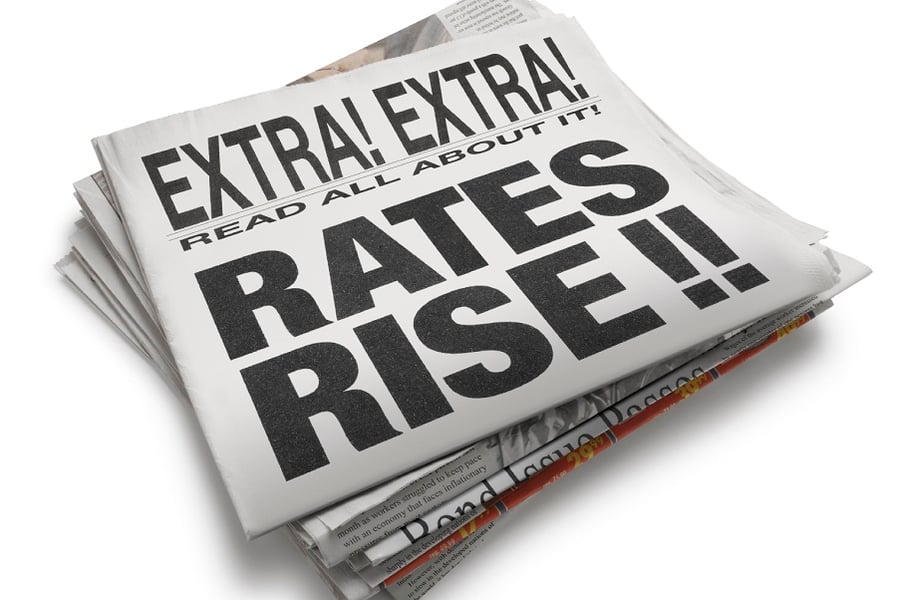Here we go again.
Interest in the most popular exchange-traded fund that's used to bet on increasing U.S. interest rates is rising again as investors speculate that the Federal Reserve may embark, as early as next month, on its first hiking cycle in almost a decade.
The ProShares UltraShort 20+ Year Treasury (TBT), which uses derivatives to provide twice the opposite of the daily performance of 20-year Treasury bonds, has become the way many investors bet on rising rates. TBT has a 94% correlation to Treasury yields. In short, if yields go up, as they would be expected to in a rising rate environment, TBT would go up by double.
DASHED AGAINST THE ROCKS
This seductive dynamic is also why no ETF has incinerated more investor cash than the ProShares UltraShort 20+ Year Treasury, which has seen nearly $10 billion worth of inflows in its life but has only $2.8 billion to show for it today. Like the Sirens from Homer's Odyssey, TBT has lured countless investors with its sweet song of huge profits when interest rates rise, only to dash them against the rocks repeatedly as rising interest rates failed to materialize.
(More: Investors, bond market warm to December rate increase)
This interest rate fake-out is why you see the rare chart like the one below, which shows TBT's minus 84% performance (in the top half) as well as its consistent quarterly inflows (in the bottom half). This rare phenomenon of an ETF obliterating cash can also be found in exchange-traded products tracking gold miners, the VIX, natural gas and Russia, albeit on a smaller scale.
http://www.investmentnews.com/wp-content/uploads/assets/graphics src="/wp-content/uploads2015/11/CI1024631113.JPG"
This year, flows into TBT have died down as once (or twice) bitten, extremely shy investors stayed on the sidelines. Most recently, the Federal Reserve came out on Oct. 28 and left the door open for a rate hike. This was followed by a blockbuster jobs report, which revived market bets that the central bank will move to raise rates next month. Since then, TBT is up 8%. That swift and stark spike is one reason why this ETF has been so seductive; if it goes up 8% in two weeks on the mere thought of a Fed rate hike, imagine what it would do if we actually enter this prolonged period of rising rates that many are expecting?
'BEST TRADE EVER'
“We think TBT could be our best trade ever, when it occurs,” says Sharon Snow, a portfolio manager at Metropolitan Capital Strategies and user of leveraged ETFs.
But for her, the trade isn't ready yet.
“It takes more than just one Fed fund rate raise to allow this trade to unfold," she said. "We are looking at a longer-term time frame when the U.S. economy really takes off, which means three quarters of GDP between 3.3 [percent and] 3.7% with an indication of multiple of interest rate increases.”
Beyond the tactical play of using TBT simply to bet on rising rates, many investors have used the ETF as a duration killer for their portfolio. TBT can bring down the overall duration — or the sensitivity of bond prices to changes in their yield — of the debt in buy-side portfolios. TBT's duration is minus 19 years, whereas normal bond positions usually have positive duration.
(More: December rate increase would be rough on stocks and bonds, Gundlach says)
In other words, adding a little bit of TBT exposure to a portfolio can lower its overall interest rate risk without money managers having to reduce their longer-dated bond positions altogether. This is one of the reasons that TBT has maintained $2.8 billion in assets, which makes it the largest leveraged ETF in the U.S. The only catch is that, as with any leveraged ETF, the daily resetting of the leverage means that the -2x returns are guaranteed on only a daily basis, and over time, any volatility can corrode those returns.
TBT's duel usage by both profit-hungry traders looking for a quick interest rate-related buck and money managers seeking to lower their portfolio's overall duration is why TBT could easily become one of the largest ETFs in the world.
And if it can be a $2.8 billion ETF despite absolutely pitiful performance, imagine what would happen if the trade actually starts working.







